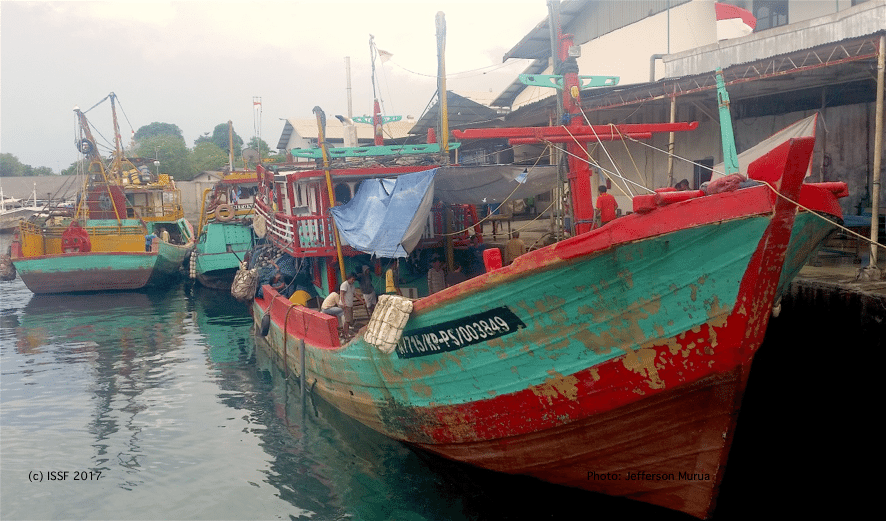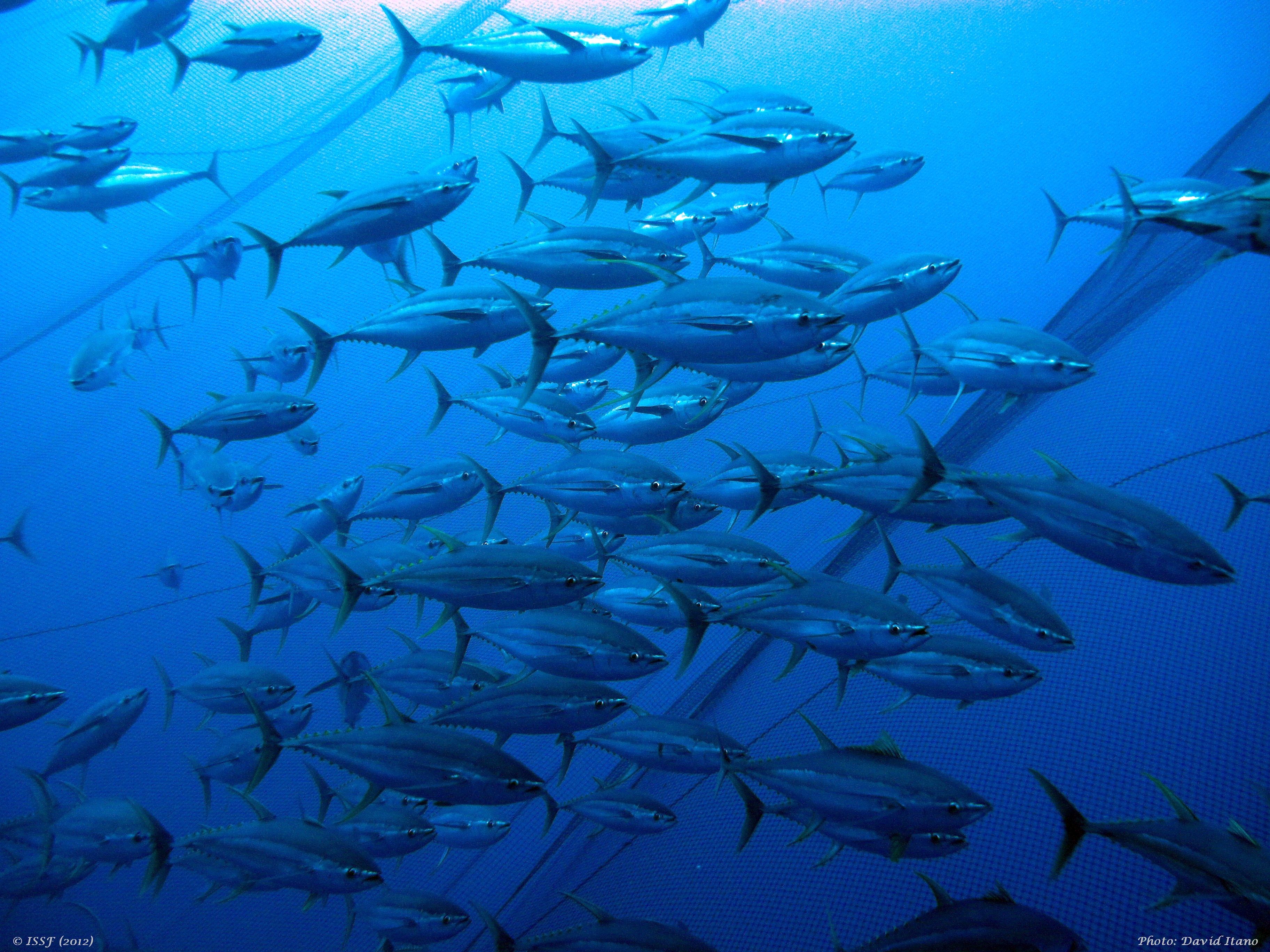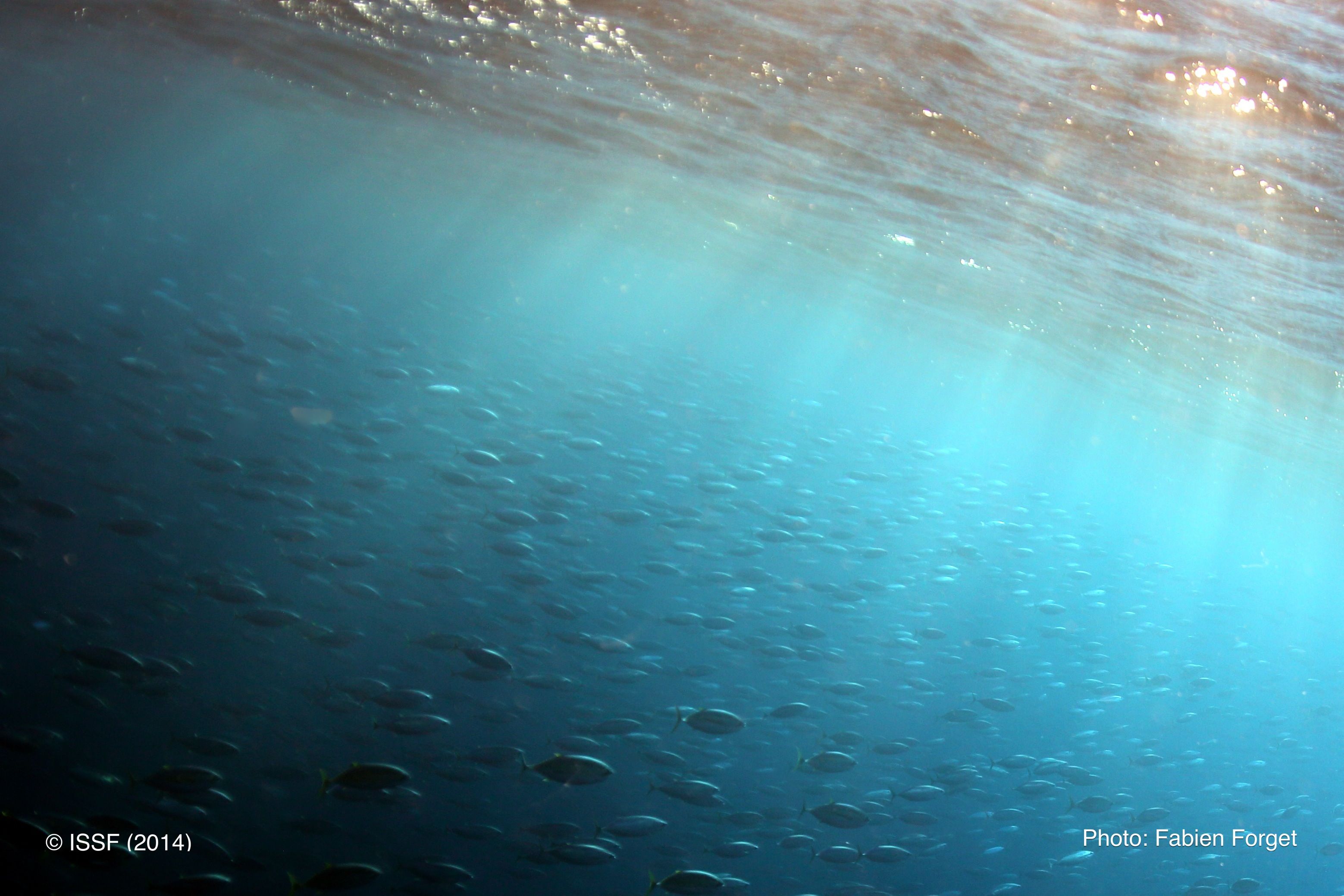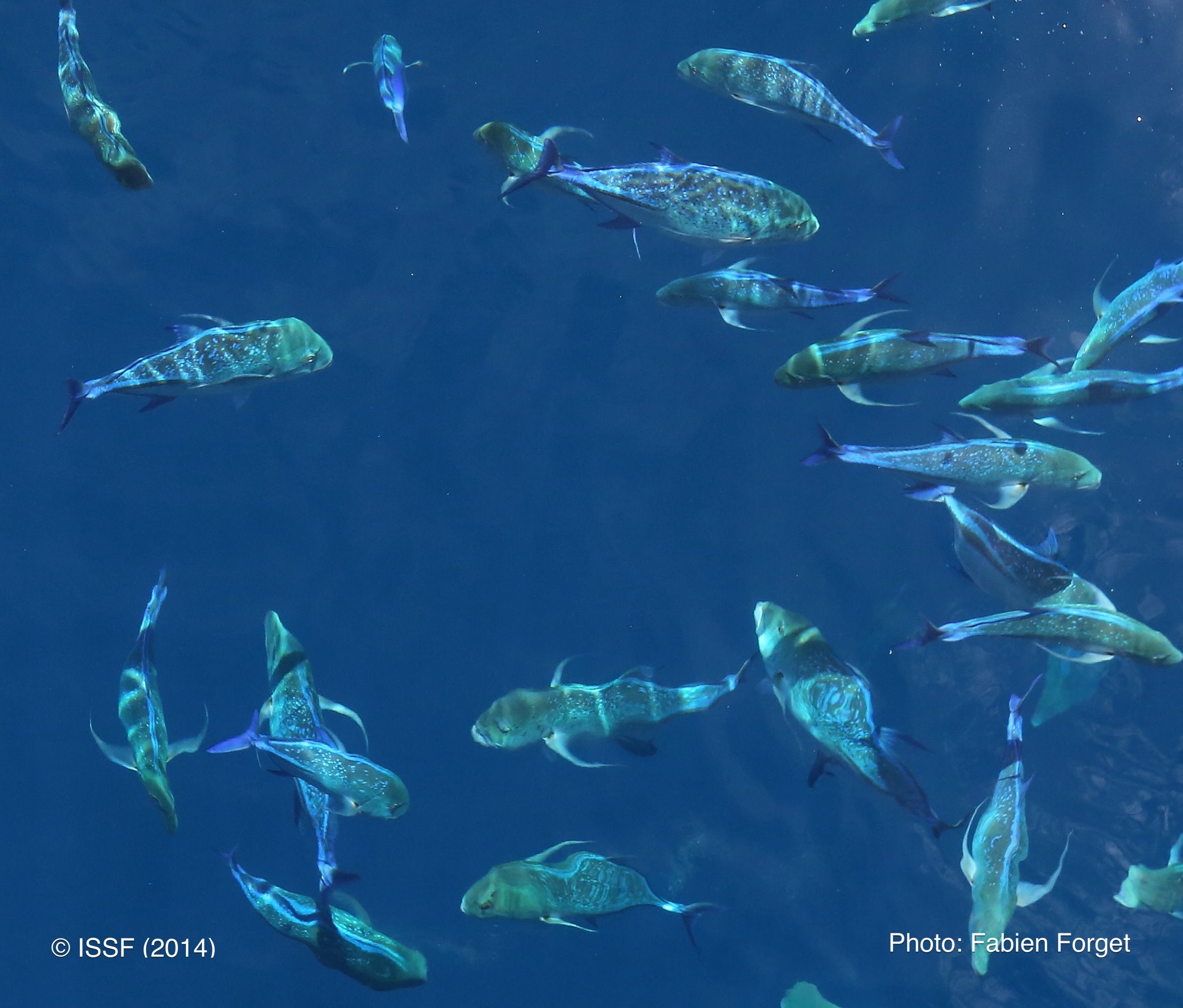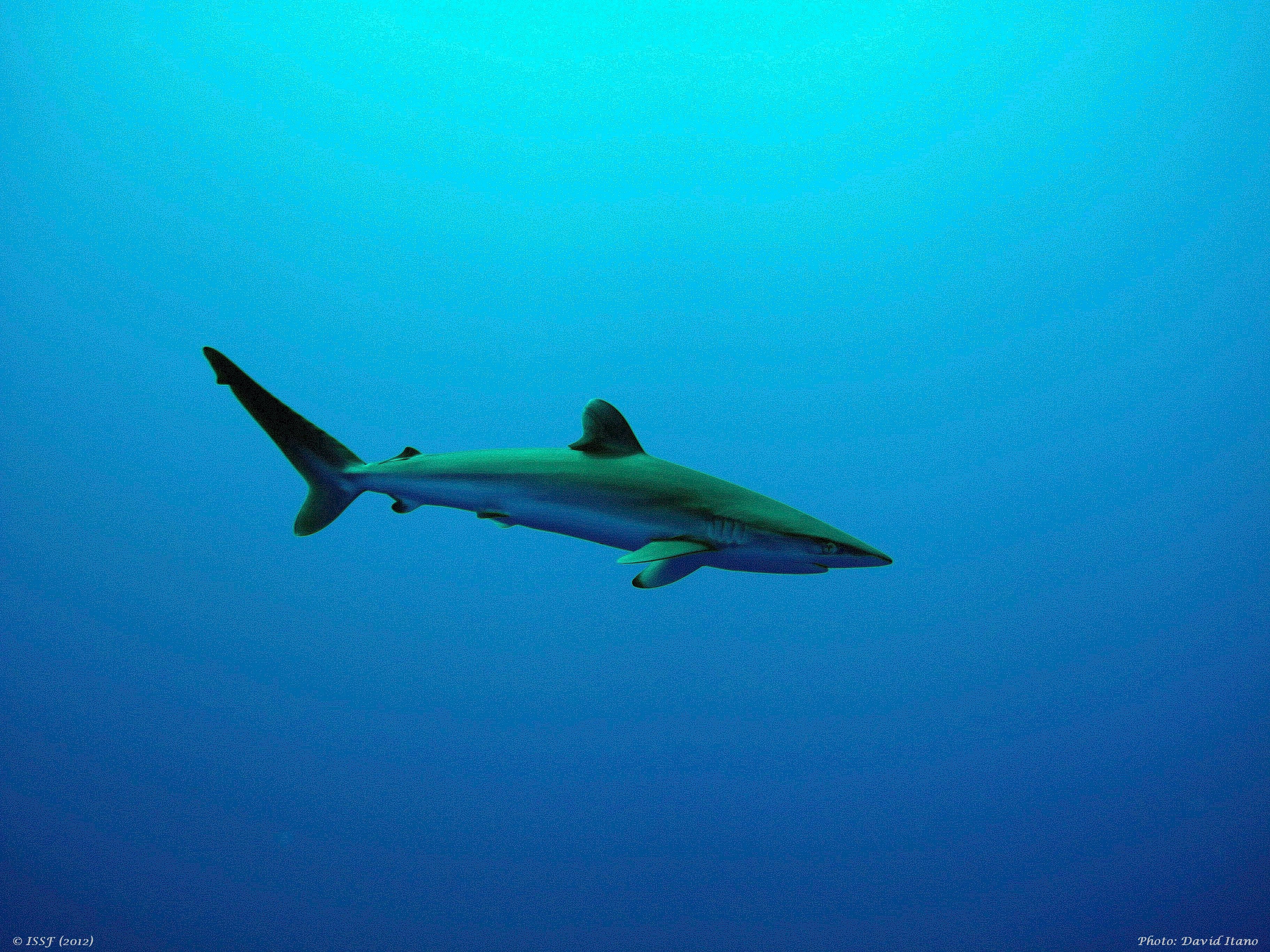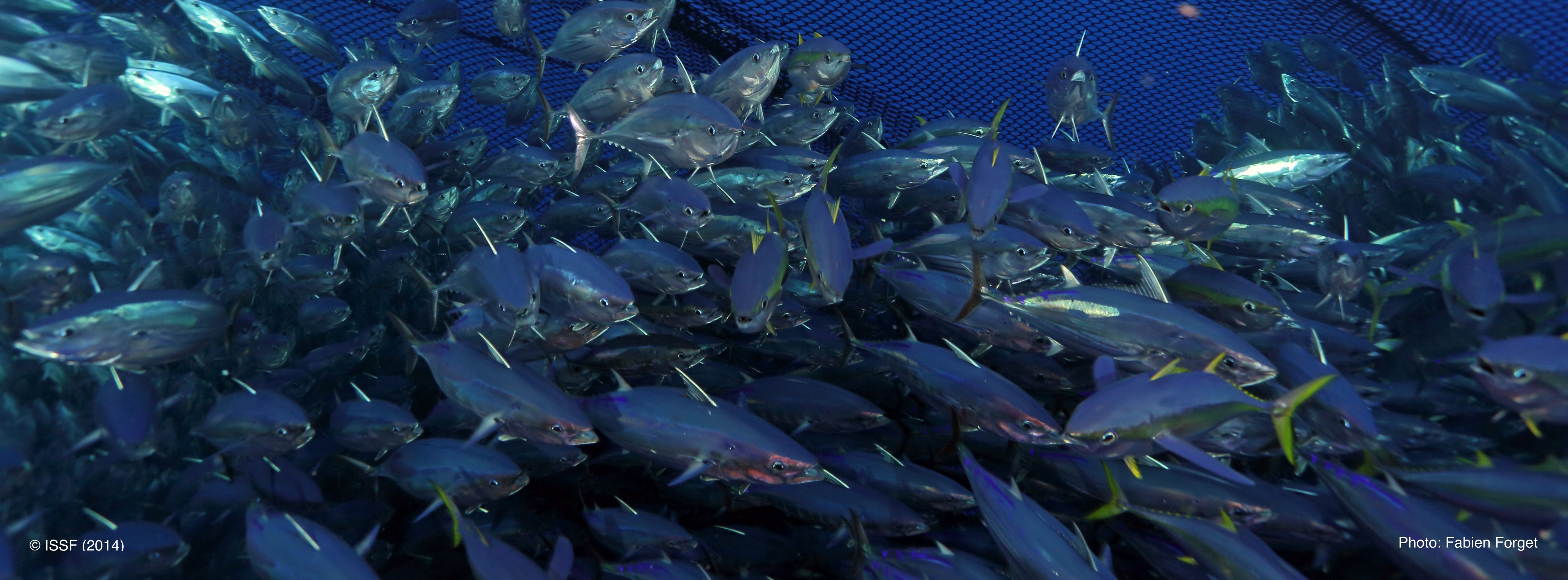Of the total tuna catch, 78% comes from stocks at “healthy” levels, an increase of 2% since last reported, according to a November 2017 International Seafood Sustainability Foundation (ISSF) Status of the Stocks report. Eleven percent of the global catch comes from overfished stocks, and another 11% of the catch is from stocks at an intermediate level of abundance. (See “Key Questions” below for definitions of overfished and overfishing.)
Updated several times per year, Status of the Stocks ranks the 23 stocks of major commercial tunas around the world using a consistent methodology. The report assigns color ratings (green, yellow or orange) on stock health, alternately noted as “abundance” and “spawning biomass”; fishing mortality; and ecosystem impact.
There are some encouraging changes in tuna stock status since the previous February 2017 Status report. The November 2017 report reflects new data from 2017 tuna Regional Fisheries Management Organization (RFMO) meetings:
- Abundance ratings improved for Eastern Pacific bigeye, Western and Central Pacific bigeye, Mediterranean albacore, and Western Atlantic bluefin.
- Fishing mortality ratings improved for Western and Central Pacific bigeye, North Pacific albacore, and Indian Ocean albacore.
In contrast, two bluefin stocks (Southern and Pacific Ocean), one yellowfin stock (Indian Ocean), and one bigeye stock (Atlantic Ocean) remain overfished. See Tables 1 and 2 in the report for specific rating changes.
Inadequate bycatch monitoring and/or bycatch mitigation measures — represented by separate “Environmental Impact” scores, the third rating area — still are a concern in many of the tuna fisheries studied.
Key Findings in Updated Report
Other notable statistics and findings include:
- Total catch: In 2015, the total major commercial tuna catch was 4.8 million tonnes, a 4% decrease from 2014. More than half of the total catch (58%) was skipjack tuna, followed by yellowfin (28%), bigeye (8%) and albacore (4%). Bluefin tunas accounted for only 1% of the global catch. These percentages did not change from the February 2017 report.
- Abundance or “spawning biomass” levels: Globally, 57% of the 23 stocks are at a healthy level of abundance (an increase of 5% from the previous report), 17% are overfished, and 26% are at an intermediate level.
-
- Stocks receiving orange scores, indicating overfishing or overfished status, include both Southern Hemisphere and Pacific Ocean bluefin, Indian Ocean yellowfin, and Atlantic bigeye.
- Fishing mortality levels: 65% of the stocks (an 8% improvement since the previous report) are experiencing a low fishing mortality rate, and 13% are experiencing overfishing.
- Largest catches by stock: The three largest catches in tonnes are Western Pacific Ocean skipjack, Western Pacific Ocean yellowfin, and Indian Ocean yellowfin.
- Tuna production by fishing gear: 64% of the catch is made by purse seining, followed by longline (12%), pole-and-line (9%), gillnets (4%) and miscellaneous gears (11%).
For the first time in Status of the Stocks history, the November 2017 report features an appendix with a list of fisheries certified by the Marine Stewardship Council (MSC).“The MSC fishery certification scheme is the most widely recognized indicator of seafood sustainability,” explains Dr. Victor Restrepo, Vice President of Science, ISSF. “The list helps us to track the tuna stocks and fishing gears that are certified.”
About the Report
There are 23 stocks of major commercial tuna species worldwide – 6 albacore, 4 bigeye, 4 bluefin, 5 skipjack, and 4 yellowfin stocks. The Status of the Stocks summarizes the results of the most recent scientific assessments of these stocks, as well as the current management measures adopted by the RFMOs. In addition, this report ranks the status and management of the 23 stocks using a consistent methodology based on three factors: Abundance, Exploitation/Management (fishing mortality) and Environmental Impact (bycatch).
ISSF produces two reports annually that seek to provide clarity about where we stand — and how much more needs to be done — to ensure the long-term sustainability of tuna stocks: the Status of the Stocks provides a comprehensive analysis of tuna stocks by species, and the Evaluation of the Sustainability of Global Tuna Stocks Relative to Marine Stewardship Council Criteria provides a review of the health of tuna fisheries by region. The MSC-certified fisheries list (Appendix 2) in Status of the Stocks complements the Evaluation report.
Together, these tools help to define the continuous improvement achieved, as well as the areas and issues that require more attention. Access the newly updated ISSF stock status ratings here.
Key Questions Answered by the Report
Status of the Stocks answers three key questions about each tuna stock:
Is the stock overfished?
The report measures the abundance of fish that are able to reproduce each year, called the spawning stock biomass (SSB), and compares it to an estimate of the biomass that would produce maximum sustainable yield (SSBMSY), which is the spawning biomass that results in the highest average catches in the long-term (this is a target of fisheries management). When SSB is below SSBMSY , the stock is in an “overfished” state.
Overfishing doesn’t necessarily mean that the stock is in immediate danger of extinction or collapse — it means that currently, the fish aren’t being allowed to grow and reproduce at their most productive level. If a stock is overfished, the report will note any corrective measures being taken by the relevant fisheries management organization (RFMO).
Is it in danger of becoming overfished?
The report measures the fishing mortality rate (F), a measure of fishing intensity, and compares it to the fishing mortality that produces maximum sustainable yield (FMSY). When F is above FMSY, the stock is in danger of becoming overfished in the future. This is called overfishing. If overfishing is taking place, the report will note any corrective measures being taken.
Are the methods used to catch the tuna also catching significant numbers of non-targeted species?
The report also measures the environmental impact of fishing in terms of “bycatch” rates. Bycatch is any species caught by the boat that is not the kind of fish the skipper is searching for. All fishing methods result in some bycatch of non-target species. The report identifies the relative bycatch rates by fishing gear and reports on mitigation measures adopted by the RFMOs for various species groups.
